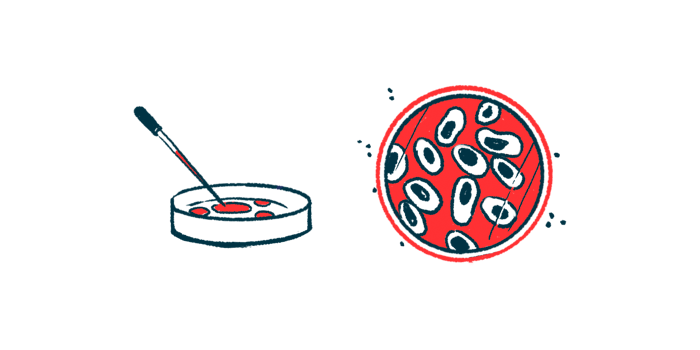New technique may aid Parkinson’s cell therapies’ efficiency
Removing 4 genes from stem cells increased dopaminergic neuron production

Scientists have developed a more efficient method for using stem cells to create new dopaminergic neurons, the dopamine-making nerve cells whose death and dysfunction causes Parkinson’s disease.
The technique was detailed in Nature Communications, in the study, “Enhanced production of mesencephalic dopaminergic neurons from lineage-restricted human undifferentiated stem cells.”
Dopamine is a chemical messenger that certain nerve cells use to communicate with each other. In Parkinson’s disease, the neurons in the brain that normally make dopamine sicken and die and the reduction that results in dopamine signaling gives rise to disease symptoms.
Cell therapies to replace the lost dopaminergic neurons with new, healthy cells may be a viable strategy for treating Parkinson’s. To get dopaminergic neurons, scientists typically rely on stem cells, which can grow into many different cell types, including neurons.
It’s not easy to get stem cells to only grow into one type of cell, however. As a result, with standard methods, only a fraction of the cells generated from stem cells will actually be usable dopaminergic neurons. The rest will be other cell types that aren’t suited for Parkinson’s therapy.
Guiding cells’ differentiation
“Stem cells offer promising potential for treating Parkinson’s disease by transforming into specific nerve cells. However, the precision of this transformation poses a significant challenge with current methods, resulting in low purity,” Mark Denham, PhD, a co-author of the study at Aarhus University, Denmark, said in a press release.
Here, researchers were able to grow dopaminergic neurons from stem cells with better efficiency.
The technique involves first genetically engineering the stem cells to remove four genes — GBX2, CDX1, CDX2, and CDX4. These genes aren’t needed for stem cells to grow into dopaminergic neurons, but they are required for stem cells to become many other types of cells. By removing them, the researchers ensured that fewer cells can differentiate into unwanted cell types, letting more usable dopaminergic neurons be produced.
“By knocking out genes involved in early lineage specification, we prevented the cells from differentiating into unwanted lineages and guided their differentiation down a [dopaminergic] neuron lineage,” wrote the researchers, who found that only about 25% of cells generated using standard techniques were usable dopaminergic neurons. Using their new technique, they increased this percentage up to 69%.
A rat model experiment of Parkinson’s indicated that transplants of neurons made using the new technique led to a greater increase in dopamine signaling than using cells generated from standard techniques. The researchers concluded that their lineage-restricted technique “produced a significantly higher population of [dopaminergic] neurons and significantly improved motor function in a clinically relevant nonpharmacological behavioral test.”
“Using our genetically engineered cells we generate a higher purity of dopamine cells … My goal is to help patients stay off their medication, which requires high purity. So, my next step is to transfer my method to clinical trials,” Denham said.







